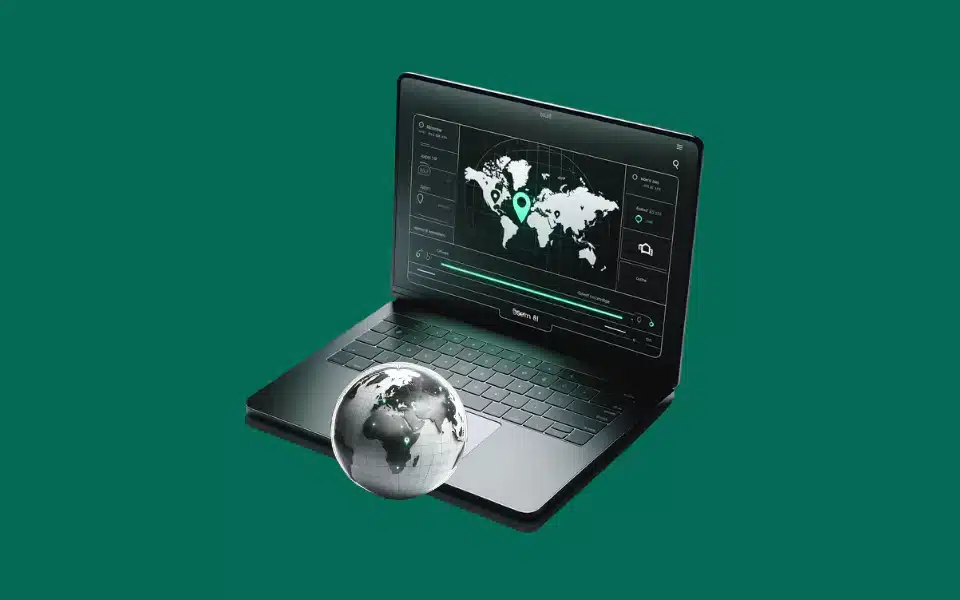In an age where our virtual footprints trail us like digital breadcrumbs, the ability to control our online location has become more valuable than ever. Whether you’re a traveler seeking the best travel deals, a business targeting specific audiences, or simply someone who values online privacy, understanding the power of geolocation proxies for geo-targeting and geo-spoofing is key.
Table of Contents
Understanding Geolocation and IP Masking
Ever wonder how websites know where you are even without asking? The magic lies in IP geolocation, a system that translates your internet protocol (IP) address – your unique online identifier – into a physical location. Imagine it as an invisible map, constantly charting your digital travels.
Think of your IP address like your home address for online communication. Databases maintained by organizations like Regional Internet Registries (RIRs) assign these addresses to internet service providers (ISPs), who then distribute them to users like you.
These databases also hold location information associated with each IP range, essentially linking your address to a city, region, or even country.
Geolocation Accuracy
But just like maps come in different scales, geolocation accuracy varies. Some databases might pinpoint you to your city, while others offer a broader regional picture. This depends on how much information the ISPs provide and how frequently the databases are updated.

How Geolocation Proxies Work
Now, here’s where geolocation proxies enter the scene. These clever tools act as gateways, rerouting your internet traffic through servers in specific locations. By “wearing” the IP address of the proxy server, you can mask your actual location and appear to be browsing from anywhere in the world.
But geolocation proxies come in two types:
- Static proxies: These offer a consistent IP address from a chosen location, ideal for building trust with specific websites or services.
- Rotating proxies: These constantly switch your IP address, providing increased anonymity and making it harder for websites to track your activity.
And the granularity gets even more impressive! Some proxies let you choose your location down to the city or even the street, making them perfect for hyper-targeted marketing or accessing geo-restricted content with pinpoint precision.
What Is Geo-Spoofing And Its Use Cases?
Tons of content are hidden behind geographical walls. With geo-spoofing, these walls become transparent. This potent technique lets you mask your true location and navigate the online world from a virtual disguise, opening doors you never knew existed.
Think of geospoofing like donning an invisibility cloak for your internet activity. Geo-spoofing grants you access to a world of benefits:
- Unlock geo-restricted shows: Craving a show only available in Australia? Geo-spoof your way Down Under and binge-watch to your heart’s content.
- Buy Tickets For Reselling: Say goodbye to sold-out concert blues and Ticketmaster restrictions! Geo-spoofing can be your secret weapon for buying coveted Ticketmaster tickets to resell and make money.
- Catch sneaker releases before everyone: Many sneaker releases happen at different times across the globe. By spoofing your location, you can snag kicks before they even hit your local stores, giving you a significant advantage.
- Escape censorship’s grip: Access news and apps blocked in your region. Break free from censorship and stay informed, no matter where you are. For example: By setting your location to a country where a YouTube video is available, you can bypass YouTube georestrictions and watch your desired content unhindered.
- Embrace the cloak of anonymity: Shield your online activity from prying eyes. Geo-spoofing makes you a digital ghost, blurring your tracks and protecting your privacy.
- Dodge location-based tracking and marketing: Tired of targeted ads based on your every move? Geo-spoofing throws off the trackers, letting you browse freely without the constant digital shadow.

GeoSpoofing Tools: Proxies And VPN
VPNs (Virtual Private Networks):
- Encrypt your entire internet traffic: This creates a secure tunnel between your device and the VPN server, masking your IP address and online activity.
- Route your traffic through server in chosen location: You can select a server in a different country or city, making it appear as if you’re browsing from that location.
- Less granular location control: VPNs typically offer a wider range of server locations, but may not always provide precise city-level targeting like some proxies.
- Additional features: Some VPNs offer additional functionalities like malware protection, ad blocking, and access to streaming services blocked in your region.
Geolocation Proxies:
- Offer more granular location control: V6proxies allow you to choose servers in specific cities or even streets, providing precise location masking.
- Faster connection speeds: Since they don’t encrypt all traffic, proxies can often offer faster speeds than VPNs.
Is GeoSpoofing Legal?
Of course, with great power comes responsibility. Consider these potential issues before embarking on your geospoofing efforts:
- Legality and ethics: Geo-spoofing can be illegal in certain situations, especially when used to bypass laws or regulations. Always tread carefully and be mindful of the ethical implications.
- Service provider terms and conditions: Many platforms prohibit spoofing in their terms of service. Violation can lead to account suspension or even legal repercussions.
- Detection and countermeasures: Websites and services constantly develop methods to detect and counter spoofing attempts. Be prepared for potential roadblocks and choose reliable tools to stay ahead of the game.
What Is Geotargeting?
Geotargeting refers to the practice of delivering content or advertisements to a user based on their geographic location. This technique tailors your marketing efforts to the location-specific characteristics and needs of your audience.
To use proxies for geotargeting, follow these steps:
- Select a Proxy Service: Choose a proxy provider that offers geotargeting capabilities. Ensure they provide proxies in your target geographic locations. Check V6proxies service page to find all your needs.
- Set Up Proxies: Configure your chosen proxies in your web browser or marketing tools. This setup typically involves entering the proxy IP address and port number.
- Test Proxies: Verify that your proxies work correctly and actually show the desired geographic location.
- Integrate with Marketing Tools: Use these proxies with your marketing tools (like SEO or ad platforms) to simulate user access from different locations.
- Analyze and Adjust: Regularly analyze the performance of your geotargeted campaigns and adjust your strategies as needed.

Geotargeting Proxies Use Cases
Geotargeting enhances marketing effectiveness by aligning content with the user’s location. Here are some use cases:
- Localized SEO Optimization: Test and optimize your website for search engine results in different locations with SEO proxies.
- Region-Specific Advertising: Run advertising campaigns that are specifically tailored to different geographic areas, and ensure your ad is viewable across your target regions.
- Market Research: Understand how different regions interact with websites or advertisements to refine marketing strategies.
- E-commerce Customization: Adjust product offerings, pricing, and shipping options based on the user’s location.
- Compliance with Regional Regulations: Ensure that your online ads comply with local laws and regulations.
- Social Media Marketing: Target social media campaigns to audiences in specific geographic locations.
Using Geolocation Proxies For International Ecommerce Customization
Using geolocation proxies for international e-commerce customization involves tailoring your online store’s content, products, pricing, and user experience based on the geographic location of the visitor. This approach can significantly enhance customer experience and conversion rates. Here’s how to implement it:
1. Choose the Right Proxy Service:
- Find a reliable proxy service provider that offers online shopping geolocation proxies.
- Ensure the proxies cover the countries or regions where your target audience resides.
2. Integrate Proxies with Your E-commerce Platform:
- Configure the proxies to work with your e-commerce platform or website.
- This might involve technical setup like API integration or configuring your server to recognize and use these proxies.
3. Detect User Location:
- When a user visits your e-commerce site, the proxy identifies their geographic location.
- This location data should accurately reflect the user’s actual region or country.
4. Customize Content and Products:
- Tailor your website’s content, including language, cultural references, and imagery, to suit the detected location.
- Adjust the product catalog to show items that are available or popular in the user’s region.
5. Localize Pricing and Payments:
- Display prices in the local currency of the visitor.
- Offer local payment methods, which can increase trust and convenience for the customer.
6. Adjust Shipping Options:
- Present relevant shipping options and costs based on the user’s location.
- This might include local delivery services or special shipping rates for certain regions.
7. Test and Optimize:
- Regularly test the website from different geographic locations to ensure the customization works correctly.
- Use analytics to understand how location-based customization impacts user behavior and sales.
8. Maintain Privacy and Legal Compliance:
- Be aware of and comply with regional data protection and privacy laws.
- Inform users if their location data is being used for customization.
Learn more: What Are SSL Proxy Servers & SSL Unblockers? (2024)
Related articles:
What is a Proxy Browser? & Top Free Options in 2024
SOCKS5 vs. VPN: Differences, Use Cases & How To Choose
- Tags:




